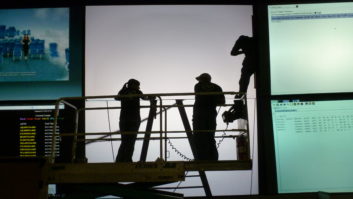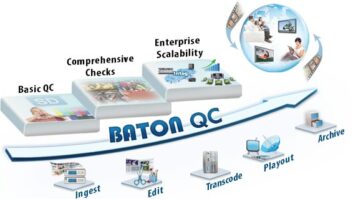Advanced audio systems are changing the parameters of what is possible with teleconferencing. Russell Gentner of Listen Technologies looks at the latest developments.
Listen Technologies’ ListenPoint is a collaboration system that brings together multiple audio sources to put anyone in the room right in the centre of the sound. No one has to strain to hear or be heard. Information is shared clearly and powerfully – exactly how good communication should happen.
One of the most important and beneficial features of ListenPoint is its ability to do teleconferencing. When we discuss this feature, sometimes people get confused. The purpose of this article is to shed some light on just exactly how ListenPoint does teleconferencing.
Example 1: Telephone teleconferencing
It’s a daily occurrence in many organisations to connect two or more rooms together to have a meeting or a “conference call”. These calls allow people to meet and communicate. The most common way to do this is to use a soundstation such as the Polycom SoundStation 2 (SS2, below).
The SoundStation 2 has speakers to hear the people on the other end of the call and three built-in microphones so they can hear you. ListenPoint is designed to work with the SS2 to enhance the sound of the call.
So, how does ListenPoint work with the Polycom SoundStation? Answer: The wireless M1 Microphone/Media Interfaces of ListenPoint become additional microphones on the SS2. Thus, when you talk into a ListenPoint M1, the people on the other end of call can better hear you. And, since the M1s are wireless, they can roam anywhere in the room.
Do the people on the other end of the call come through the ListenPoint speakers? Answer: No. They are heard only through the speaker on the SS2.
Example 2: Computer/VOIP teleconferencing
With the advancement of computer and VOIP calls (such as Skype, GoToMeeting, etc.), now organisations can use these almost-free services for conference calls. ListenPoint is designed to work directly through a computer to conduct these types of calls.
How does ListenPoint work with computer/VOIP teleconferencing? ListenPoint works just like a headset that is connected to a computer. The wireless M1s used on ListenPoint are just like the microphone on a headset and the ListenPoint speakers are like the earphones on your headset.
Example 3: Advanced teleconferencing and videoconferencing
ListenPoint is right at home in those rooms where there is an integrated AV system used for telephone and videoconferencing. ListenPoint can be easily integrated so that the ListenPoint M1s and other audio sources can be heard at the other end of teleconference and the audio from the far end of the teleconference can be heard through the ListenPoint speakers. This is all done by interfacing through an integrated acoustic echo canceller (that’s part of the AV system) that eliminates the echo when far end audio is picked up on the near end and returned to the far end.
Russell Gentner is president of Listen Technologies






